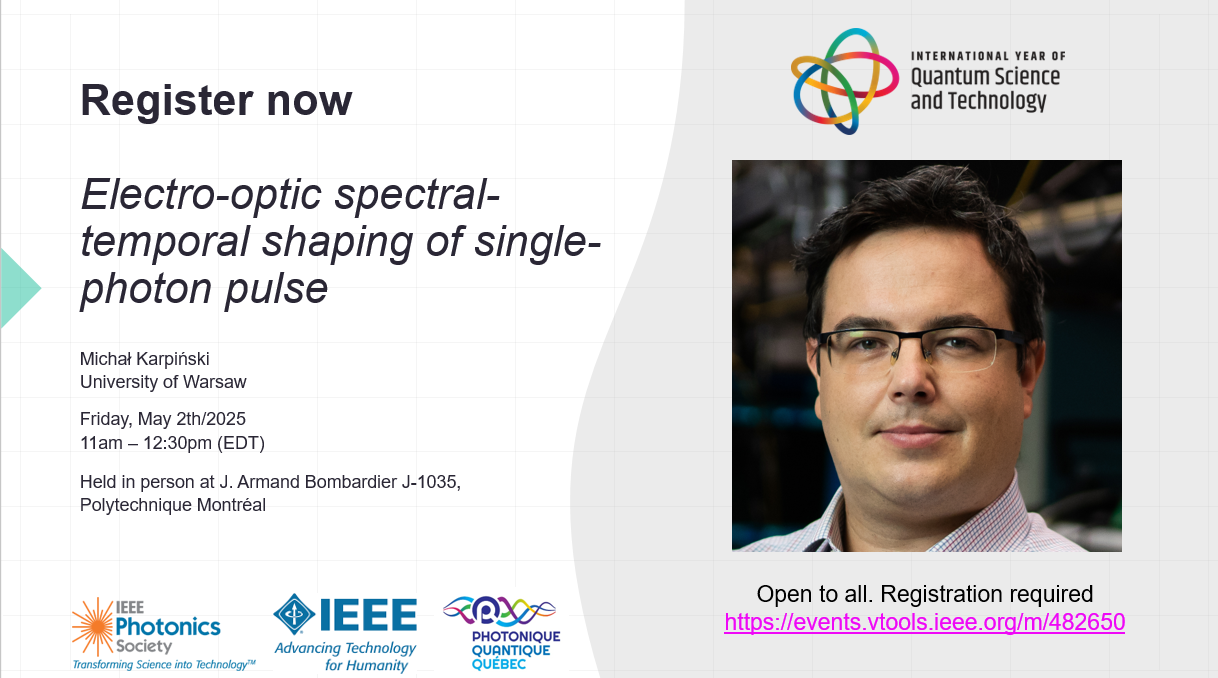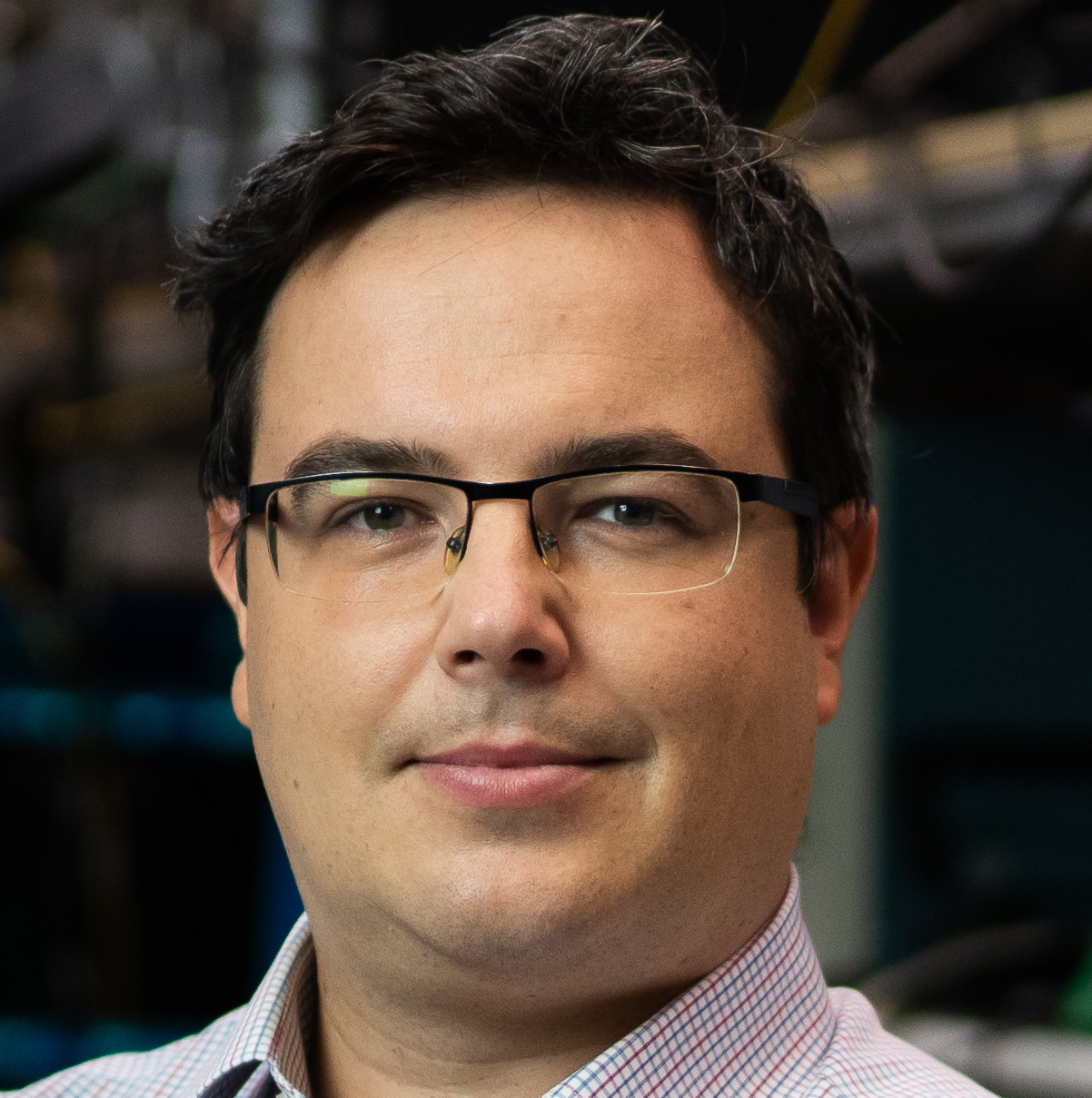Electro-optic spectral-temporal shaping of single-photon pulse

[1] M. Karpiński, A. O. C. Davis, F. Sośnicki, V. Thiel, B. J. Smith, “Control and measurement of quantum light pulses for quantum information science and technology,” Adv. Quantum Technol. 4, 2000150 (2021).
[2] F. Sośnicki, M. Mikołajczyk, A. Golestani, M. Karpiński, “Interface between picosecond and nanosecond quantum light pulses,” Nature Photon. 17, 761 (2023).
[3] A. Golestani, A. O. C. Davis, F. Sośnicki, M. Mikołajczyk, N. Treps, M. Karpiński, “Electro-optic Fourier transform chronometry of pulsed quantum light,” Phys. Rev. Lett. 129, 123605 (2022).
[4] A. Widomski, M. Ogrodnik, M. Karpiński, “Efficient detection of multidimensional single-photon time-bin superpositions,” Optica 11, 926 (2024).
Date and Time
Location
Hosts
Registration
-
 Add Event to Calendar
Add Event to Calendar
- Contact Event Hosts
-
Contact: nicolas.quesada@polymtl.ca
- Co-sponsored by Prof. Nicolas Quesada
Speakers
Michał Karpiński of University of Warsaw
Electro-optic spectral-temporal shaping of single-photon pulse

Spectral-temporal modes of quantum light have been recognized as a promising platform for quantum information processing (QIP) and metrology [1]. However, a simple general tool for efficient conversion between spectral-temporal modes is still missing. A phase-only, i.e. in-principle lossless, approach is required for quantum light. I will show that transformations between spectral-temporal modes can be realized by a single application of arbitrary temporal phase modulation and a single application of arbitrary spectral phase modulation. The required arbitrary phases can be found by means of the well-known phase retrieval algorithm, such as the Gerchberg-Saxton algorithm. We apply machine learning-based optimization to find slowly varying phases, opening the way to experimental implementation using wide-bandwidth electro-optic phase modulation [2]. I will also discuss strategies to detect temporal properties of short single-photon optical pulses [3,4].
[1] M. Karpiński, A. O. C. Davis, F. Sośnicki, V. Thiel, B. J. Smith, “Control and measurement of quantum light pulses for quantum information science and technology,” Adv. Quantum Technol. 4, 2000150 (2021).
[2] F. Sośnicki, M. Mikołajczyk, A. Golestani, M. Karpiński, “Interface between picosecond and nanosecond quantum light pulses,” Nature Photon. 17, 761 (2023).
[3] A. Golestani, A. O. C. Davis, F. Sośnicki, M. Mikołajczyk, N. Treps, M. Karpiński, “Electro-optic Fourier transform chronometry of pulsed quantum light,” Phys. Rev. Lett. 129, 123605 (2022).
[4] A. Widomski, M. Ogrodnik, M. Karpiński, “Efficient detection of multidimensional single-photon time-bin superpositions,” Optica 11, 926 (2024).
Biography:
Bio: Michał Karpiński is an assistant professor at the Faculty of Physics, University of Warsaw, Poland, where he is heading the Quantum Photonics Laboratory. After finishing his PhD at the University of Warsaw he was a Marie Skłodowska Curie Postdoctoral Fellow at the University of Oxford (2013-2016). From 2016 he is heading the Quantum Photonics Laboratory at the University of Warsaw.

